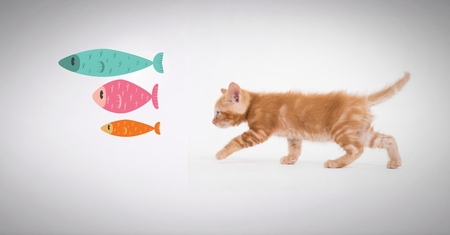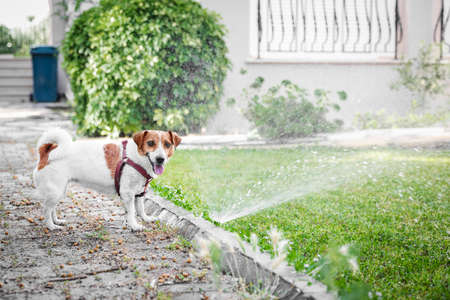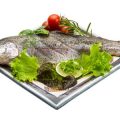1. Understanding Your Fish’s Dietary Needs
Feeding your fish properly starts with understanding their dietary needs. Different types of fish have unique feeding requirements based on their natural diets in the wild. Generally, fish fall into three main categories: carnivores, herbivores, and omnivores. Knowing which category your fish belongs to will help you provide the right food and feeding schedule.
Carnivorous Fish
Carnivorous fish primarily eat meat-based foods such as insects, small fish, or crustaceans. They require a protein-rich diet to stay healthy. Some common carnivorous aquarium fish include bettas, angelfish, and certain species of cichlids.
Recommended Diet for Carnivorous Fish
- Live or frozen foods like bloodworms, brine shrimp, and daphnia
- High-protein pellets or flakes
- Occasional feeder fish (for larger species)
Herbivorous Fish
Herbivorous fish rely on plant-based foods for nutrition. They often graze throughout the day rather than eating large meals at once. Popular herbivorous aquarium fish include plecos, certain types of cichlids, and some goldfish varieties.
Recommended Diet for Herbivorous Fish
- Algae wafers and spirulina-based flakes
- Blanched vegetables like zucchini, spinach, and peas
- Aquatic plants (if available in the tank)
Omnivorous Fish
Omnivorous fish eat both plant- and meat-based foods, giving them a more flexible diet. Many popular aquarium fish, such as guppies, mollies, and tetras, fall into this category.
Recommended Diet for Omnivorous Fish
- A mix of high-quality flakes or pellets containing both plant and animal proteins
- Treats like freeze-dried bloodworms or brine shrimp
- Vegetables such as cucumbers or lettuce in small amounts
Nutritional Needs Comparison
| Fish Type | Main Diet | Common Foods | Feeding Frequency |
|---|---|---|---|
| Carnivores | Meat-Based | Bloodworms, brine shrimp, high-protein pellets | Once or twice daily in small portions |
| Herbivores | Plant-Based | Algae wafers, blanched vegetables, aquatic plants | Multiple small feedings throughout the day |
| Omnivores | Mixed Diet | Pellets/flakes with both protein & plants, occasional treats | Once or twice daily in moderate portions |
The type of food you provide should be suited to your fishs dietary category to ensure they receive the necessary nutrients for growth and health. Overfeeding or feeding the wrong type of food can lead to health issues such as bloating or water pollution. Understanding these dietary needs is the first step toward developing a proper feeding schedule for your fish.
2. How Often Should You Feed Your Fish?
Feeding your fish the right amount at the right frequency is crucial for their health and well-being. Overfeeding can lead to water contamination, while underfeeding may result in malnutrition. The ideal feeding schedule depends on the species, age, and dietary needs of your fish.
Freshwater vs. Saltwater Fish Feeding Frequency
Different types of fish have different feeding requirements. Some species thrive on frequent small meals, while others do better with fewer feedings. Heres a general guideline for various fish types:
| Type of Fish | Feeding Frequency | Notes |
|---|---|---|
| Tropical Freshwater Fish (e.g., Tetras, Guppies) | 1-2 times per day | Small portions to avoid overfeeding |
| Cichlids | 1-2 times per day | Varied diet for optimal health |
| Goldfish | 2-3 times per day | Avoid excessive feeding to prevent bloating |
| Bettas | Once or twice per day | Avoid overfeeding as they have small stomachs |
| Saltwater Fish (e.g., Clownfish, Tangs) | 1-3 times per day | Diverse diet including live or frozen food |
| Plecos & Bottom Feeders | A few times per week | Nocturnal feeders; provide sinking pellets or algae wafers |
| Carnivorous Predatory Fish (e.g., Lionfish) | Every 2-3 days | Larger meals spaced out to mimic natural feeding habits |
The Importance of Portion Control
A good rule of thumb is to feed only what your fish can consume within 2-3 minutes. Uneaten food can decay and negatively impact water quality, leading to potential health issues.
Adjusting Feeding Based on Age and Activity Level
Younger fish generally require more frequent feedings due to their rapid growth, while adult fish need less frequent meals. Additionally, active swimmers may require slightly more food than sedentary species.
Tips for Maintaining a Healthy Feeding Routine:
- Avoid overfeeding: Excess food can lead to obesity and poor water conditions.
- Diversify their diet: Offering a mix of flakes, pellets, live, or frozen food ensures balanced nutrition.
- Create a consistent schedule: Feeding at the same time each day helps regulate digestion and behavior.
- Observe their eating habits:If your fish leave food uneaten, adjust portion sizes accordingly.
- Add fasting days:Certain species benefit from occasional fasting to aid digestion and prevent bloating.
The key to a healthy aquarium is understanding the specific needs of your fish and adjusting their feeding routine accordingly. By following these guidelines, you can ensure that your aquatic pets stay happy and healthy.

3. Choosing the Right Food for Your Fish
Feeding your fish the right type of food is just as important as how often you feed them. Different fish species have unique dietary needs, so choosing the best food ensures their health and longevity. Lets explore the various types of fish food and determine which option suits your fish best.
Types of Fish Food
Flakes
Flake food is one of the most common options for aquarium fish. It is suitable for top-feeding species like guppies, tetras, and bettas. However, flakes can lose nutrients quickly once they hit the water, so its essential to feed an appropriate amount.
Pellets
Pellets come in floating, sinking, or slow-sinking varieties, making them versatile for different fish species. They are more nutrient-dense than flakes and work well for larger fish like cichlids, goldfish, and bottom dwellers such as catfish.
Live Food
Live foods like brine shrimp, daphnia, and bloodworms provide high protein content and are great for carnivorous and omnivorous fish. These foods mimic a natural diet but require careful handling to prevent introducing parasites or diseases into your tank.
Frozen Food
Frozen foods offer similar benefits to live food but with added convenience. Options include frozen shrimp, worms, and other small aquatic creatures. This type of food retains high nutritional value and is a safe alternative to live feeding.
Choosing the Best Food for Your Fish
The right choice depends on your fish species, dietary requirements, and feeding habits. Below is a simple guide to help you decide:
| Fish Type | Recommended Food |
|---|---|
| Tropical Fish (Tetras, Guppies) | Flakes, Small Pellets, Frozen Brine Shrimp |
| Cichlids | Larger Pellets, Live/Frozen Foods |
| Bettas | Pellets, Bloodworms (Live/Frozen), Brine Shrimp |
| Goldfish | Sinking Pellets, Leafy Greens |
| Bottom Feeders (Catfish, Loaches) | Sinking Wafers, Algae Tablets |
Tips for Feeding Your Fish Properly
- Avoid overfeeding—uneaten food can pollute the water.
- Diversify their diet to ensure balanced nutrition.
- If using live food, buy from reputable sources to prevent contamination.
- Select pellet or flake sizes that match your fish’s mouth size.
- Observe your fish after feeding to ensure they are eating properly.
Selecting the right food helps maintain your fish’s health and keeps your aquarium clean. By understanding different food options and their benefits, you can provide a well-balanced diet tailored to your fishs specific needs.
4. Common Feeding Mistakes to Avoid
Feeding your fish might seem simple, but many aquarium owners make mistakes that can harm their aquatic pets. Understanding these common errors and how to avoid them will help keep your fish healthy and your tank clean.
Overfeeding
One of the most frequent mistakes is overfeeding. Giving your fish too much food can lead to several issues, including poor water quality, obesity, and digestive problems.
How to Prevent Overfeeding
- Feed only what your fish can eat within 2-3 minutes.
- Avoid feeding multiple times a day unless necessary for specific species.
- Remove uneaten food to prevent it from decomposing in the tank.
Using the Wrong Type of Food
Different fish species have different dietary needs. Feeding them the wrong type of food can result in malnutrition or digestive issues.
Selecting the Right Food
| Fish Type | Recommended Food |
|---|---|
| Tropical Fish | Flakes, pellets, frozen or live food (e.g., brine shrimp) |
| Carnivorous Fish | Frozen or live protein-based food (e.g., bloodworms) |
| Herbivorous Fish | Vegetable-based flakes, algae wafers |
| Bottom Feeders | Sinking pellets, algae wafers, fresh vegetables |
Irrational Feeding Schedules
A consistent feeding schedule is important for your fishs health. Erratic feeding can cause stress and digestive problems.
Tips for a Consistent Schedule
- Create a daily or weekly feeding plan based on your fish species.
- Avoid long gaps between feedings unless required for fasting days.
- If youre away, use an automatic feeder or have someone feed them according to schedule.
Poor Food Storage Practices
The way you store fish food affects its nutritional value. Improper storage can lead to spoiled or contaminated food.
Best Practices for Storing Fish Food
- Keep food in a cool, dry place away from direct sunlight.
- Avoid using expired or stale food, as it loses nutrients over time.
- If using frozen food, store it properly and thaw only what is needed.
Avoiding these common feeding mistakes will improve the overall health of your fish and maintain a cleaner tank environment. By following proper feeding practices, you ensure your fish get the right nutrition without negatively impacting their habitat.
5. Creating a Feeding Schedule for a Healthy Aquarium
Establishing a consistent feeding routine is essential for keeping your fish healthy and maintaining water quality. Overfeeding can lead to poor water conditions, while underfeeding may leave your fish malnourished. Below, we’ll outline a practical feeding schedule to help you provide the right amount of food at the right time.
Recommended Feeding Frequency by Fish Type
Different types of fish have different dietary needs. Use the table below as a general guideline:
| Type of Fish | Feeding Frequency | Food Type |
|---|---|---|
| Tropical Fish (e.g., Tetras, Guppies) | 1-2 times per day | Flakes, pellets, occasional live or frozen food |
| Cichlids | 1-2 times per day | Pellets, flakes, live/frozen food |
| Goldfish | 2-3 times per day (small portions) | Pellets, flakes, vegetables |
| Betta Fish | Once per day | Pellets, occasional live or frozen food |
| Bottom Feeders (e.g., Catfish, Plecos) | Once per day (evening preferred) | Sinking pellets, algae wafers, fresh vegetables |
| Pond Fish (e.g., Koi, Goldfish) | 2-4 times per day (seasonal adjustments) | Pellets, vegetables, live/frozen treats |
The Importance of Consistency in Feeding
Your fish thrive on routine. Try to feed them around the same time each day to help regulate their metabolism and digestion. A consistent feeding schedule also prevents uneaten food from accumulating and degrading water quality.
Avoid Overfeeding: Follow the “Two-Minute Rule”
A good rule of thumb is to feed only what your fish can consume within two minutes. If there’s leftover food after this time, you may be overfeeding. Remove excess food promptly to keep the tank clean.
Nutritional Variety for Optimal Health
Diversifying your fish’s diet helps ensure they receive all necessary nutrients. Consider rotating between dry foods (flakes and pellets), frozen foods (brine shrimp, bloodworms), and fresh vegetables when appropriate.
A Weekly Feeding Plan Example
If you’re unsure how to balance different food types throughout the week, here’s an example schedule:
| Day of the Week | Main Food Type | Treats/Supplements |
|---|---|---|
| Monday | Pellets or flakes | – |
| Tuesday | Pellets or flakes | Dried bloodworms or brine shrimp |
| Wednesday | Pellets or flakes | – |
| Thursday | Pellets or flakes | Zucchini slice or algae wafer (for bottom feeders) |
| Friday | Pellets or flakes | – |
| Saturday | Pellets or flakes | Daphnia or frozen shrimp |
| Sunday | – (Fasting Day) | – |
The Benefits of a Fasting Day for Your Fish
A weekly fasting day allows your fish’s digestive system to rest and helps prevent bloating and constipation, especially for species prone to digestive issues like goldfish and bettas.
Troubleshooting Common Feeding Issues
Your Fish Aren’t Eating?
If your fish refuse food, check water parameters first—poor water quality can reduce appetite. Also, consider varying their diet to encourage eating.
You Notice Cloudy Water?
This could be due to overfeeding. Reduce portion sizes and remove uneaten food immediately.
Your Fish Are Gulping at the Surface?
This might indicate hunger but could also signal poor oxygen levels in the tank. Ensure proper aeration before increasing feeding amounts.
A well-planned feeding schedule will keep your fish healthy while maintaining excellent water quality in your aquarium.


